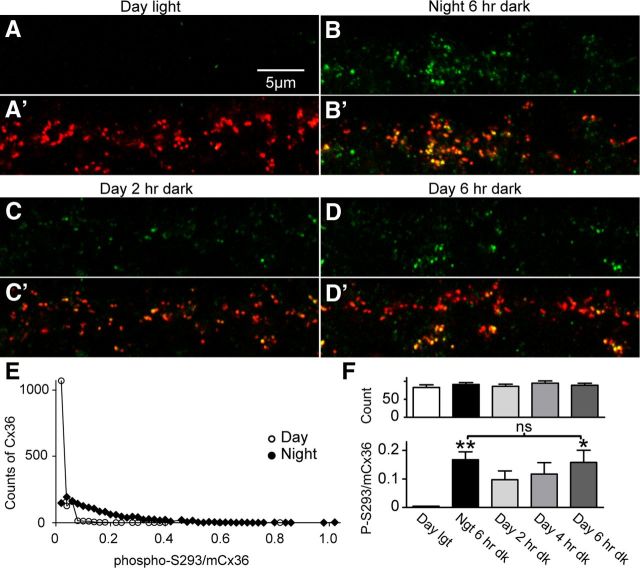Figure 3.
Phosphorylation state of Cx36 in the OPL in light- or dark-adapted mouse retina in daytime and at night. Phosphorylated Cx36 was labeled with a phospho-specific antibody against S293 of Cx36 (green), in reference to the total Cx36 (mCx36; red). Cx36 was poorly phosphorylated in daytime light-adapted retina (A, S293-P alone; A′, phospho-S293 and mCx36 merged). In contrast, 6 h dark-adapted retina at night (B, B′) displayed strongly phosphorylated Cx36. In daytime, dark adaptation for 2 h (C, C′) or 6 h (D, D′) enhanced phosphorylation of Cx36. E, Histogram of phosphorylation states (phospho-S293/mCx36) of individual gap junctions in nighttime dark-adapted retina (black symbols) and daytime light-adapted retina (white symbols). Data are pooled from six nighttime and six daytime animals. F, Bottom, Summary of the median phosphorylation states of OPL Cx36 in daytime; nighttime; and 2, 4, and 6 h dark adaptation in daytime. Top, Total number of Cx36 plaques per 504 μm3 sampling volume for the same samples is plotted. Data in F are means ± SEM, n = 6–9 per condition; *p < 0.05; **p < 0.01; ns not significant.

